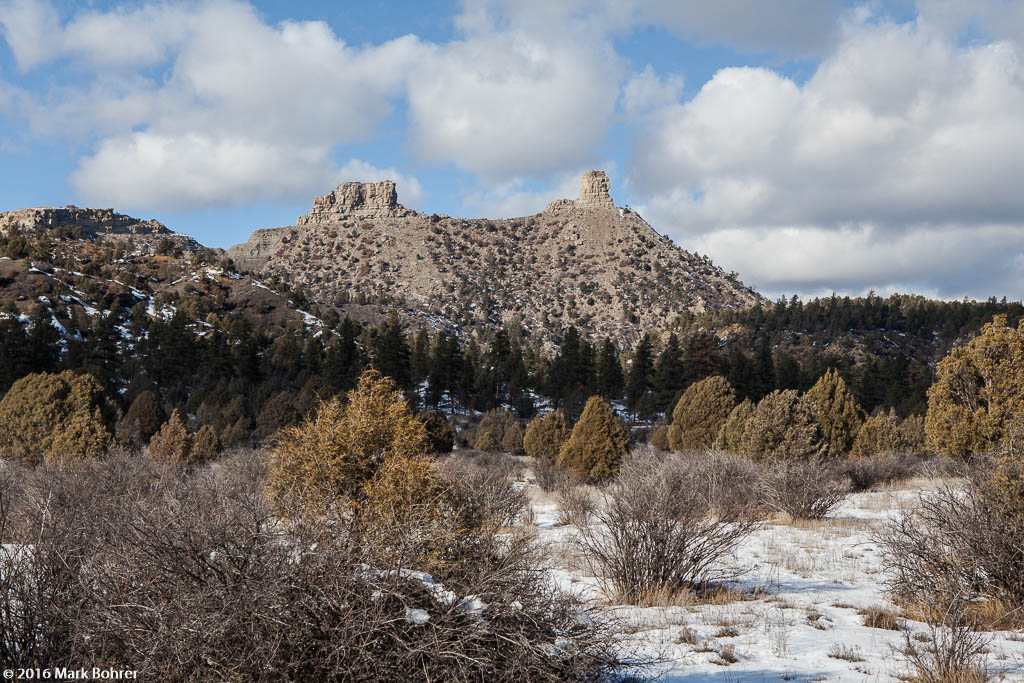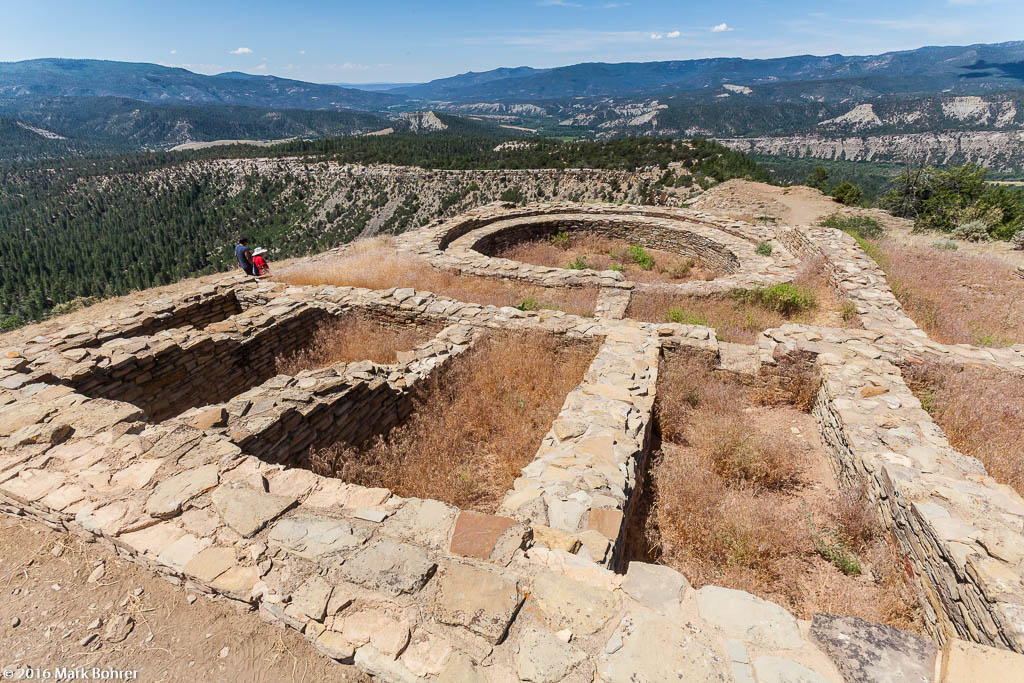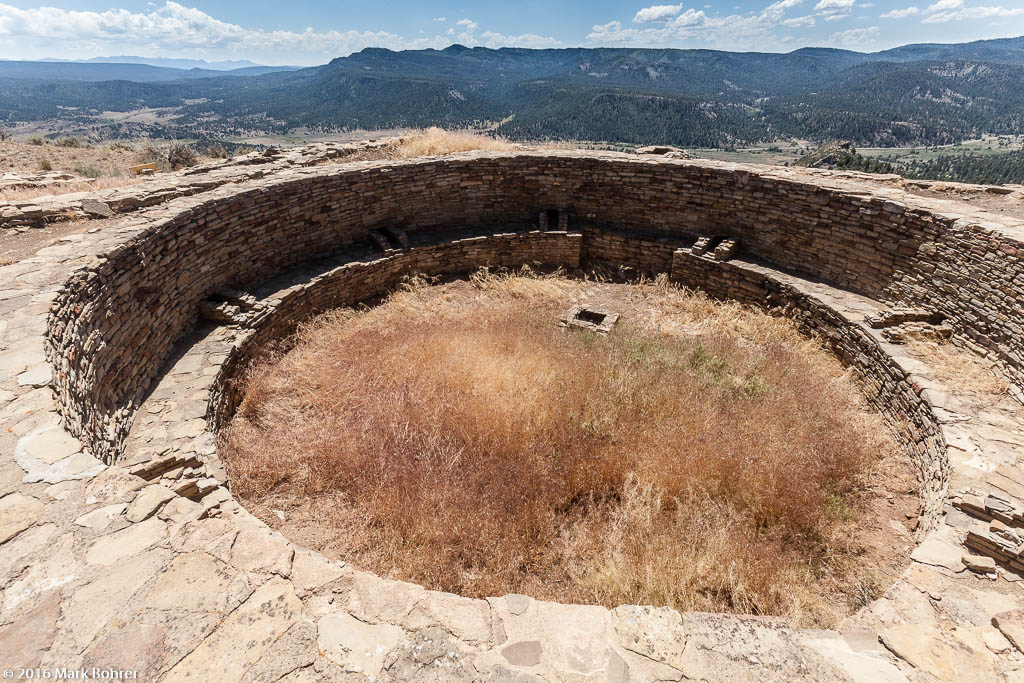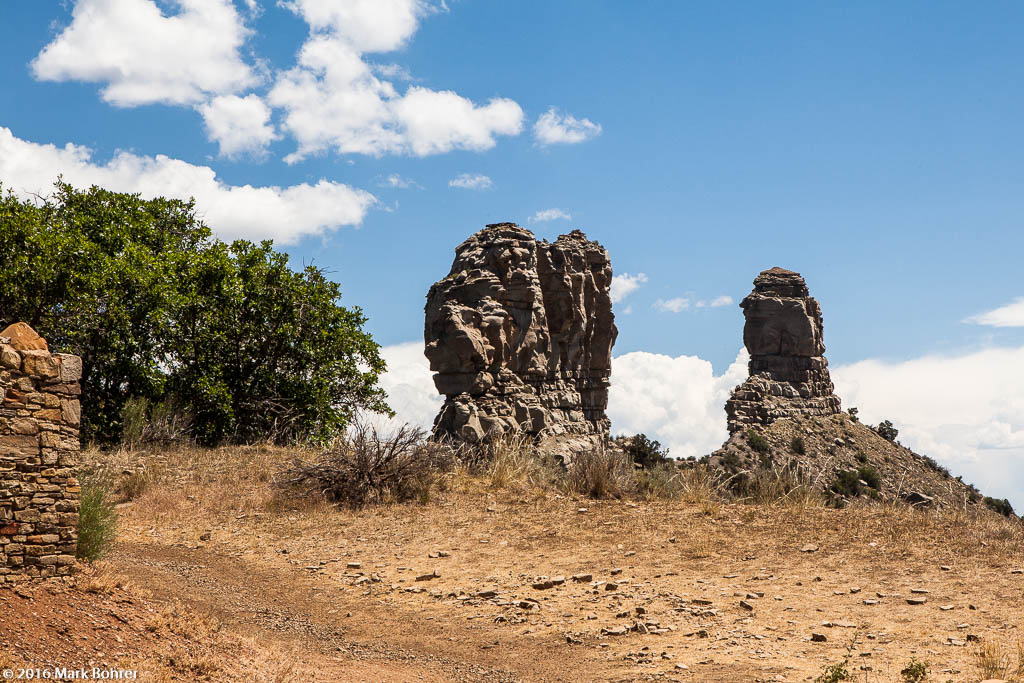|
Beginnings They came north. Others had lived there before, but none on the mountain. They found rich soil, game, a river, hard stone for tools, weapons and building, trees for wood beams in construction. Someone saw the moon rise between the stone gates when they were exploring the mountain. The moon only did this a few times during the 18.6-year cycle they knew well – they had aligned walls and buildings to its path in massive southern Great Houses.  Chimney Rock, December At first, solar and lunar movements were a means of tracking the calendar for planting and harvesting. After awhile, they came to be worshipped, and features marking them possessed, for control over people and their crops. A pueblo was built on the mountain to mark the moonrise between the gates, to own it.  Pueblo and kiva ruin, Chimney Rock Ruling A System Elite members of a culture centered 90 miles to the south used signal fires to communicate and maintain that ownership and control. Trade of essentials and luxury goods like turquoise and elk meat helped maintain it, along with ritual celebrations in the Great Houses. Those Great Houses were built by organized labor pools directed by the elites or their subordinates. This disciplined control lasted as long as crops were plentiful and people ate and lived fairly well. Overpopulation and Breakdown But populations grow in prosperity, and use up the resources where they live. Drought hit in the south, and hung around awhile. Different factions began fighting over scarce food and water, and territory possessing both. Some buildings were burned in armed conflict. Others were ritually burned and abandoned when residents decided the problems were too big to solve and left them behind. The system broke down – the elites could no longer guarantee plentiful food and prosperity.  Great Kiva, 44 feet across – Chimney Rock The pueblo with the moonrise view through the stone gates was empty by 1130. It was a bit ahead of everybody else – Puebloans burned kivas and left the San Juan Basin empty by 1300. They joined other pueblos to the southeast and west, and never returned to their old homes.  Chimney Rock and ruin wall from the summit That’s the way it seems to have happened at Chimney Rock, the northernmost Chacoan outlier in southern Colorado. But no one is really certain why. The traces are still there after 900 years. Tourist Exploration Chimney Rock National Monument is administered by the USDA Forest Service. Volunteers and the non-profit Chimney Rock Interpretive Association do most of the actual operation of the site, including tours between May 15 and September 30 every year. During that time, tours are the only way to explore the pueblo ruins at the summit. You can hike or ski to the top the rest of the year. We took a tour in July, when temperatures were moderate at the Monument’s 7643-foot summit elevation. We explored a roofless great kiva and roomblocks on a good-sized pueblo. We also enjoyed the spectacular view from the top. I have to believe that’s what attracted Ancestral Puebloans up there in the first place – there are too many Puebloan ruins in gorgeous natural settings to believe otherwise. Since there are multiple tours scheduled throughout the day, we came back down after a couple hours. Tour guides had a good command of recent archaeological thought about the site, and spun the story well. Winter Visit We returned in winter and walked past the locked gate, then partway up the road. We ran out of time to make it all the way to the top, but got a feel for how it would have been for Puebloan residents in cold weather. I much preferred returning to a warm RV and hot food in Pagosa Springs to a campfire at the top, elite or not. Shot Notes Since we drove to the top for our tour, there were no problems with weight. I used EOS 5D mk II and EOS 7D dSLRs with EF 24-70mm f/2.8L and EF 16-35mm f/2.8L lenses. Most of the time, I used small-enough apertures for depth of field close to infinity. In full sun, I avoided large expanses of background blue sky, and focused on smaller pieces of things. Some clouds appeared later in the morning, so I had better skies for backgrounds. For our December hike up the road, I used a lighter Fuji X-E2 with 4 Leica lenses from 21mm to 135mm, and the EOS 5D mk II with EF 24-70mm f/2.8L. Clouds made it easy to shoot broader scenics, which I otherwise prefer to avoid. |
(408) 483-3782
Curious about how to shoot ruins?(408) 483-3782

Recent Comments